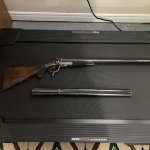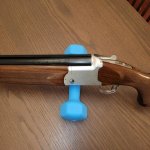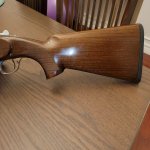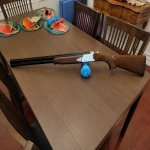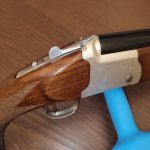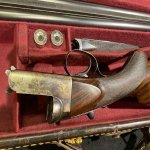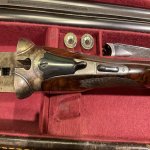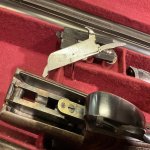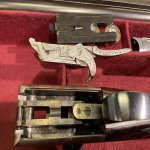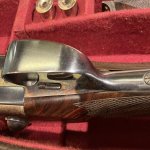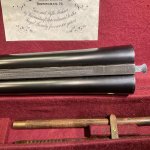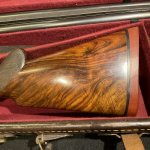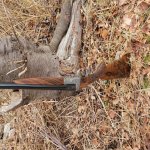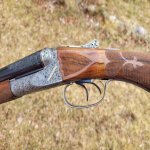That sounds like it might help narrow down the possibilities. My inclination is to lean towards it being a scratch due to the horizontal and linear nature of the line. You would think that, with twist barrels, a crack would be diagonal – following the natural seams in the materials. Or, at the very least, that it would be jagged as it half follows the stresses and gets bled to the side by the material bias.
Also, the bottom of the scratch is shiny. Your idea is predicated on the fact that cracks go deeper through the metal and will retain brake cleaner longer after the surface stuff has evaporated. The same should be true about the bottom of the scratch – it should be dark due to powder residue and crap getting jammed in there, if it were a crack.
I managed to get a pretty decent photo of it that you can view along with photos of the gun at:
https://img.gg/CuYDm9a
As you will see the gun has been used. It was no safe queen. However, almost all of the wear on the stocks is superficial and there are no cracks. The receiver is is good condition with even some case colours still visible after 118 years.
The lockup is a double underlug with doll’s head rib extension. The action is very slightly loose to an extent that can easily be rectified. The gun retains all of the original screws, including both hammer screws, and none have been buggered.
As you know, in England sub gauge guns were often ordered for women or as youth guns. With a LOP of 13” from the front trigger, this example was almost certainly one of those. This gun is in my collection as a candidate for full restoration.















































